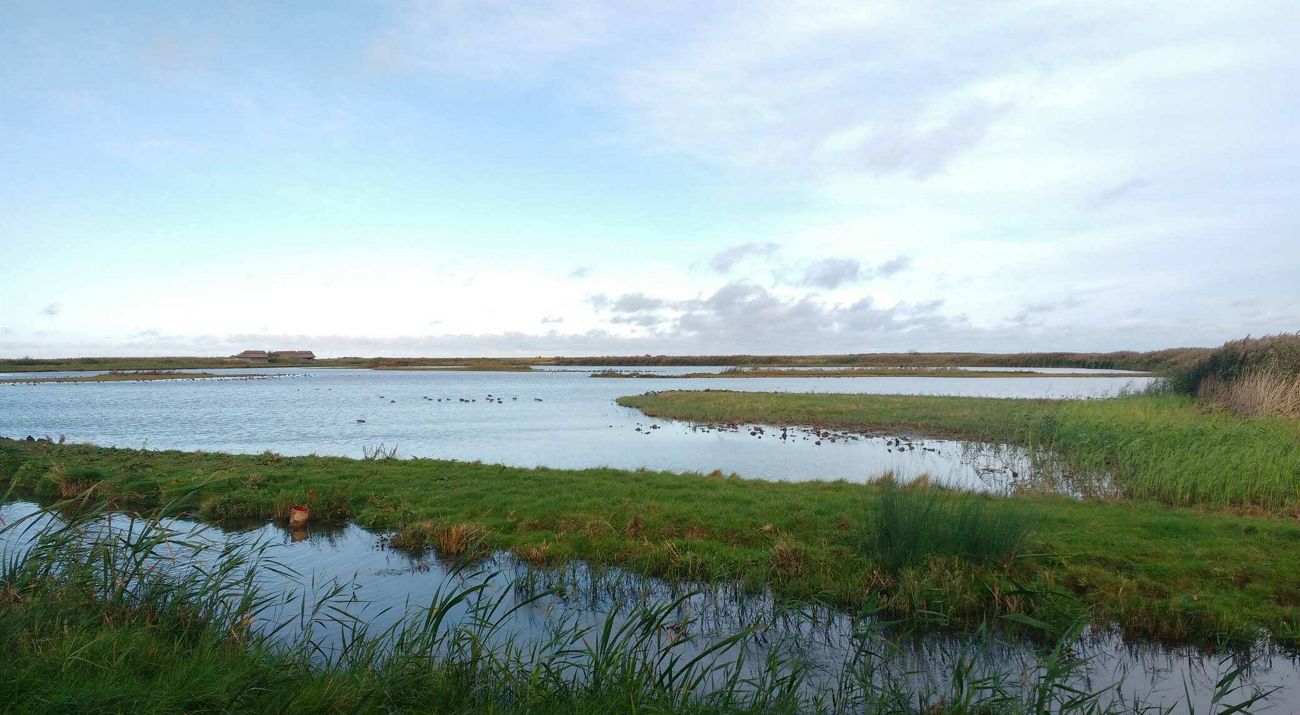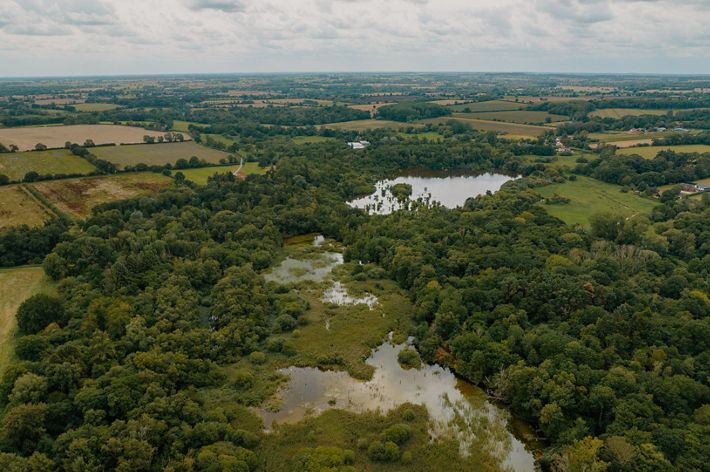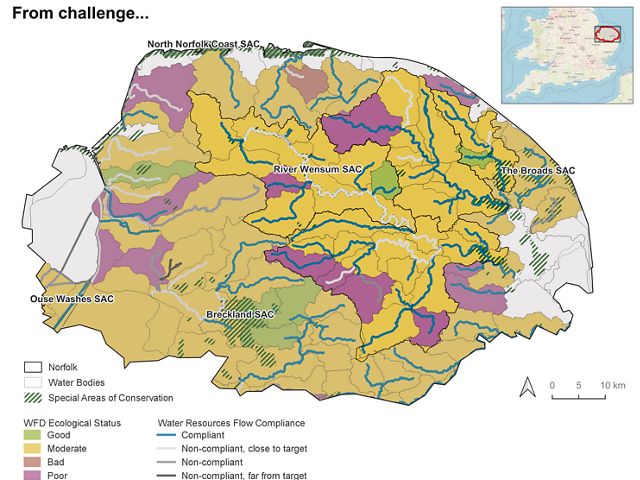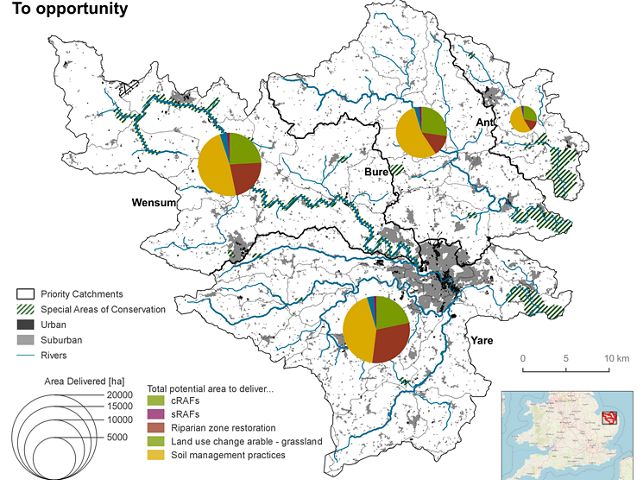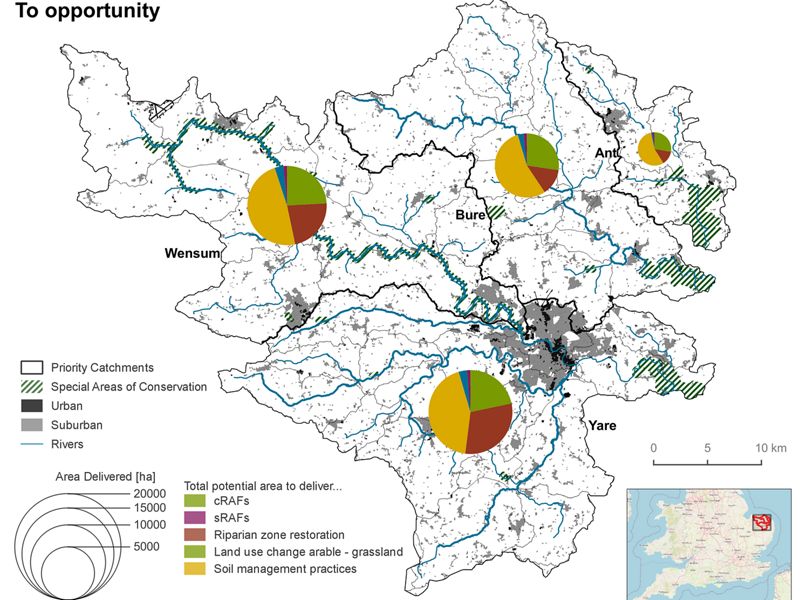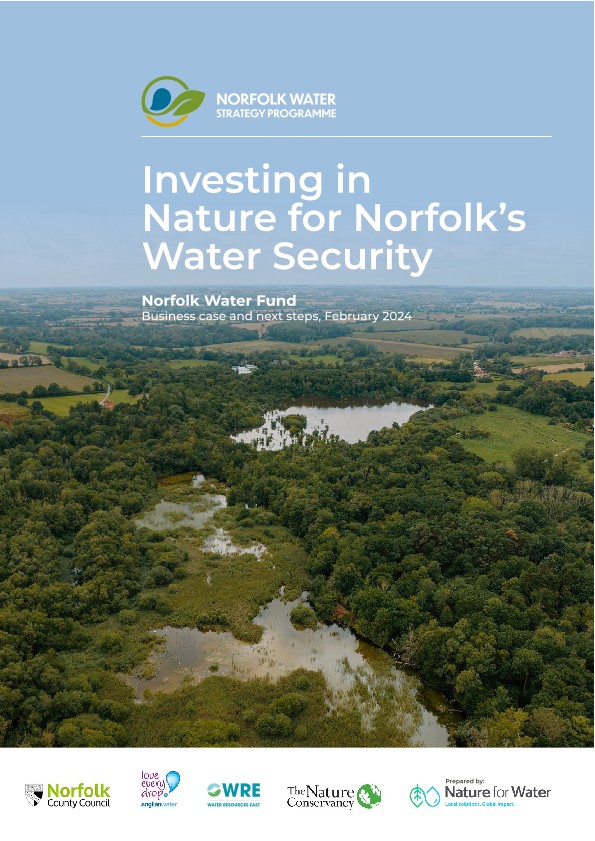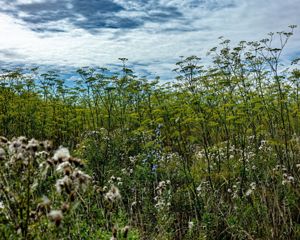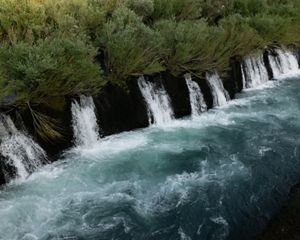Norfolk Water Fund: Investing in Nature for Water Security
A cross-sector coalition is working to scale nature’s solutions for the people of eastern England
The county of Norfolk, located on England’s eastern seaboard, is rich in natural beauty and biodiversity—from its rare chalk streams to its extensive wetlands. However, the agricultural region is also one of the UK’s driest, receiving about the same amount of rainfall annually as Lebanon.
A perfect storm of factors including a growing population, degradation of ecosystems and a changing climate is forming to impact not only the county’s environment but also its economy.
With 59 of Norfolk’s 129 river catchments already over-abstracted or over-licensed, the region faces increasing threats ranging from water security and quality to flooding. At the current rate, some local experts predict that water demand could exceed supply by 2050.
The Opportunity for Nature-Based Solutions
To ensure greater focus on these water security challenges and stimulate innovation in tackling them, in February 2021 the Norfolk County Council initiated the establishment of the Norfolk Water Strategy Programme (NWSP)—a partnership with water company Anglian Water, multi-sector membership organization Water Resources East and The Nature Conservancy (TNC).
Drawing inspiration from the water fund model that TNC has pioneered in 13 countries over the past two decades, the NSWP seeks to demonstrate how nature-based solutions can be used to complement traditional grey infrastructure in tackling Norfolk’s water challenges—showcasing the county as an international exemplar for collaborative water management.
The Norfolk Water Fund
In February 2024, with the help of the Nature for Water Facility, the NWSP released a business plan for a £30 million portfolio of nature-based solutions that offer a holistic approach to managing the region’s water resources. The plan prioritizes action along the Wensum, Yare, Bure and Ant rivers to build more resilient watersheds by reducing, slowing and infiltrating runoff, as well as changing land use in priority areas through interventions like leaky ponds, buffer strips and soil management. These solutions can be integrated into schemes for local nature recovery with limited land take that fit within a productive farmed landscape.
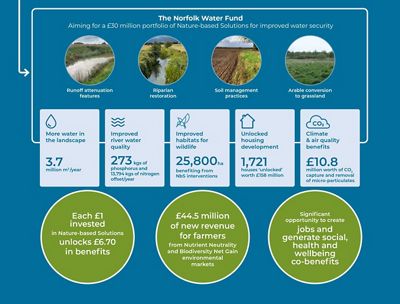
Infographic depicting the benefits of the newly launched Norfolk Water Fund: a £30 million portfolio of nature-based solutions for improved water security. The fund will invest in runoff attenuation features, riparian restoration, soil management practices, and arable grassland conversion. This will provide 3.7 million cubic metres more water per year in the landscape, offset 273 kgs of phosphorus and 13,794 kgs of nitrogen per year, improve 25,800 hectares of habitat for wildlife, unlock 1,721 more houses for development, and provide £10.8 million worth of carbon dioxide capture and the removal of micro-particulates. Each £1 invested in nature-based solutions will unlock £6.70 in benefits. The fund could generate £44.5 million in new revenue for farmers and is a significant opportunity to create jobs and generate social, health and wellbeing co-benefits.
Building Momentum for People and Planet
The NWSP draws heavily on experience from the Wendling Beck Environment Project—a farmer-led initiative backed by TNC, Anglian Water, Norfolk County Council and others, which has demonstrated real-world opportunities for financing nature restoration through private markets.
The business plan has also identified a range of other projects that, with additional investment, have the potential to help scale the implementation of nature-based solutions across the county in the years to come. These include:
- Nature for Norwich is one of WWF’s six global Nature Based Solution Accelerator projects. This will be a close collaboration with Swallowtail Consulting (the team behind the Wendling Beck Environment Project) and the Crown Point Estate, focusing on their 2,000 ha. site next to the River Yare in Norwich. The project will explore the potential NbS to deliver water quality and biodiversity benefits, and ultimately identify optimal land use scenarios that strike a balance between positive outcomes for people and nature.
- Wensum NbS monitoring trials: Working in partnership with the Environment Agency, the project will use WWF and EA funding to ground truth the potential in the Wensum catchment for nature-based runoff attenuation features to slow down and store water from farmland to help replenish aquifers and support more resilient baseflows. Modelling suggests such features could be highly beneficial and cost-effective, and the project will provide a real-world opportunity to test and validate these results.
- Home Farm, Sennowe: Norfolk Rivers Trust have identified two sites within the Wensum catchment that have potential as pilot projects to demonstrate how NbS can improve water attenuation, aquifer recharge and habitat creation. This pilot project has potential to attract natural capital market funding through the Norfolk Water Fund.
- Floodplain reconnection scheme: A shovel-ready floodplain and re-meandering project in the mid-Yare catchment that will be implemented in spring 2024 to test blended funding between partners and the BNG metric tool for riverine habitats. It will also try to deploy a nutrient monitoring strategy to build better evidence for how this type of NbS can settle out sediments and nutrients. This is being delivered by Rivers Ecology, the delivery arm of Norfolk Rivers Trust, and funded by WWF.
Download
Learn how nature-based solutions can deliver for the people of Norfolk for decades to come.
DOWNLOADGlobal Insights Newsletter
Sign up to receive our Global Insights newsletter and other select content for thought leaders who believe that, together, we can build a better future for people and the planet. We address the sustainability issues of the moment and explore potential solutions—all in a five-minute read or less.

